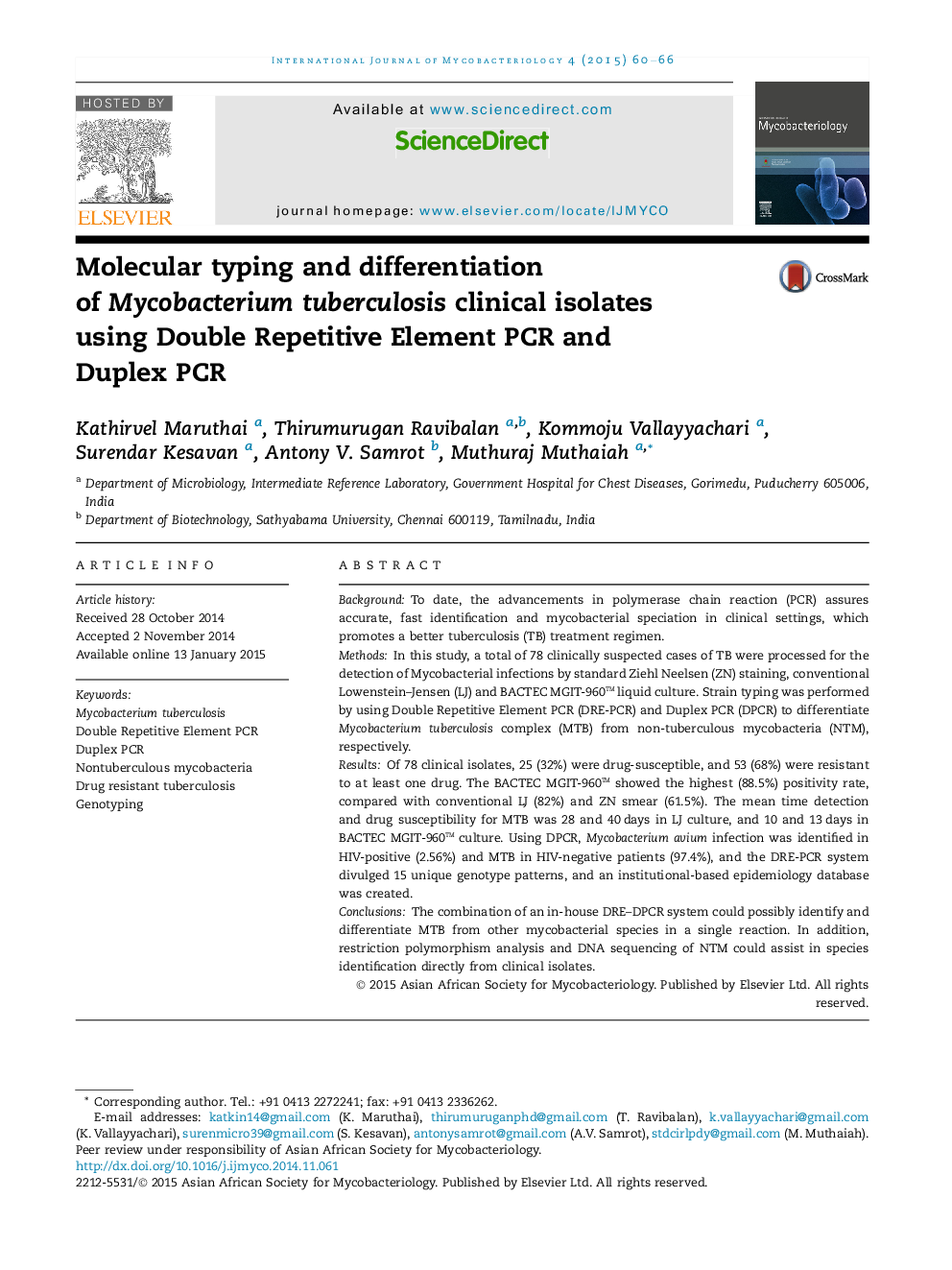| Article ID | Journal | Published Year | Pages | File Type |
|---|---|---|---|---|
| 3404977 | International Journal of Mycobacteriology | 2015 | 7 Pages |
BackgroundTo date, the advancements in polymerase chain reaction (PCR) assures accurate, fast identification and mycobacterial speciation in clinical settings, which promotes a better tuberculosis (TB) treatment regimen.MethodsIn this study, a total of 78 clinically suspected cases of TB were processed for the detection of Mycobacterial infections by standard Ziehl Neelsen (ZN) staining, conventional Lowenstein–Jensen (LJ) and BACTEC MGIT-960™ liquid culture. Strain typing was performed by using Double Repetitive Element PCR (DRE-PCR) and Duplex PCR (DPCR) to differentiate Mycobacteriumtuberculosis complex (MTB) from non-tuberculous mycobacteria (NTM), respectively.ResultsOf 78 clinical isolates, 25 (32%) were drug-susceptible, and 53 (68%) were resistant to at least one drug. The BACTEC MGIT-960™ showed the highest (88.5%) positivity rate, compared with conventional LJ (82%) and ZN smear (61.5%). The mean time detection and drug susceptibility for MTB was 28 and 40 days in LJ culture, and 10 and 13 days in BACTEC MGIT-960™ culture. Using DPCR, Mycobacteriumavium infection was identified in HIV-positive (2.56%) and MTB in HIV-negative patients (97.4%), and the DRE-PCR system divulged 15 unique genotype patterns, and an institutional-based epidemiology database was created.ConclusionsThe combination of an in-house DRE–DPCR system could possibly identify and differentiate MTB from other mycobacterial species in a single reaction. In addition, restriction polymorphism analysis and DNA sequencing of NTM could assist in species identification directly from clinical isolates.
